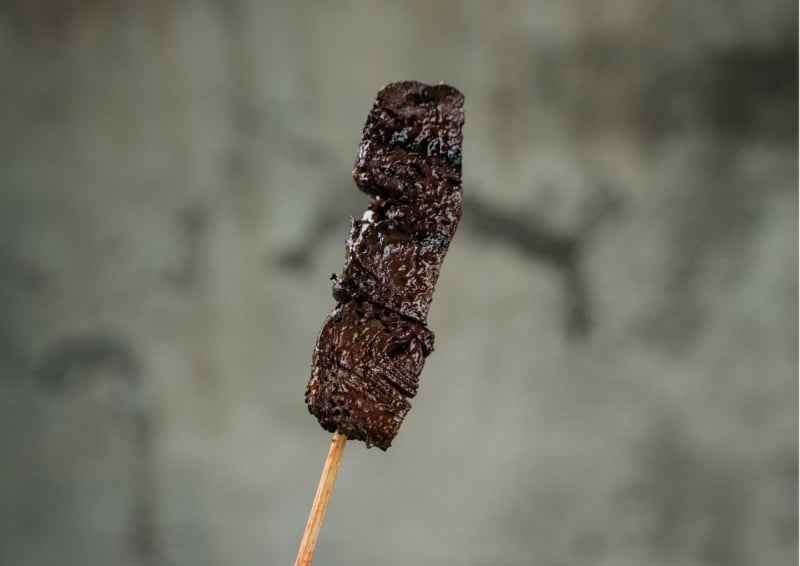A key part of any traveller’s journey is to savour the local cuisine of any country, city, or region they visit. While some may be hesitant to try unfamiliar dishes, adventurous eaters eagerly explore even the most unusual and potentially unappetizing options.
The Philippines boasts a rich culinary heritage, celebrated for dishes like adobo, lechon, halo-halo, and leche flan. However, beneath these beloved classics lie some truly unique and unconventional Filipino foods that only the boldest foodies will dare to sample. From organ meats to insects, this list highlights some of the most unusual and controversial culinary experiences awaiting you in the Philippines—if you’re brave enough!
Also read: 16 Must-Try Korean Dishes for Non-Spicy Food Lovers
1. Balut

Image Credit: Jerick Parrone | Flickr
Expatriates call balut as an “Aborted Duck Egg” for the lack of a better term. Balut is a welcome treat for some locals. However, there are also a lot of Filipinos who are averse to trying this delicacy because they find it unsavoury to eat a little duckling complete with wings and beak. The partially grown duck embryo and the yolk are good sources of protein, and the broth-like liquid that is formed due to boiling is often sipped first. The taste is unlike any soup you’ve ever tasted, and I mean that in a good way.
Many locals prefer to sprinkle this native delicacy with salt or vinegar along with onions and chopped chili. Often considered as an aphrodisiac, balut is a favourite food choice during drinking sessions. Over the years, methods of preparation have evolved from simple boiling to various other options, and you can now consume balut as fried, sizzling, and even in a soup. Yummy.
2. Helmet

Image Credit: Exotic Woman
The thing that often comes to mind would be those safety devices worn on the head to prevent any serious head injury in the event of an accident. In the Philippines, helmets also refer to marinated chicken heads, with the comb and beak removed. The heads are grilled like barbecues and are considered to be among the most common street foods in the provinces. Helmets have been prepared by locals to save the chicken heads from just being thrown away because the usual chicken parts that are consumed are just the wings, breast, legs, and thighs. After barbecuing, the helmets are dipped in a sauce that is usually composed of salt, vinegar, and chopped onions.
3. Tuslob-Buwa

Image Credit: Hanging Rice
Channel your inner zombie, or at least inner Hannibal, by trying Tuslob-buwa. The main ingredients of this simmering dish are cooked pig’s brain and liver. Yes, succulent brains. However, the fans of this bizarre dish say that it tastes real good. Servings of this dish are often complemented by rice balls. People who have tried it say that you won’t even know what the ingredients are just by looking, and maybe not knowing is part of the thrill of eating this dish.
4. Dinuguan

Image Credit: Pulaw | Flickr
From cooked brains to cooked blood, dinuguan is one of the more common bizarre food choices in the country. Dinuguan is often served with rice, but locals believe that the soulmate of this dish is the puto or steamed rice cake. One of the most common dishes because of the wide availability of its ingredients, dinuguan has become such a local favourite that commercially prepared and ready-to-eat versions have become available in the country. If you want to go down the more traditional route, there are restaurants that serve homemade or house specialty dinuguans.
5. Pinikpikan

Image Credit: Joseph Dacuma | Flickr
Pinikpikan is a traditional chicken dish among tribes in Northern Luzon. Many people are averse to trying this dish because of the manner of preparation. Meal preparation starts by beating a native chicken with a stick because it is believed that the beating and consequent blood clotting improves the flavour dramatically. The ideal beaten chicken for pinikpikan should not have any broken bones, and the skin should not break as a result of the beating. The chicken is then boiled in a salt broth with etag, which is cured pork. Pinikpikan tastes like a traditionally grilled chicken, and the formed blood around the muscles adds a unique richness that makes the meat flavourful.
Also read: 20 Philippine Provinces for the Absolute Foodie
6. Tamilok

Image Credit: cyberbaguioboy | Flickr
Tamilok is a dish that shines because of its star ingredient, the woodworm. This is one of the most polarising dishes in the magnificent island of Palawan. Brave souls describe this dish to have an oyster-like taste. But the thought of having a slimy worm sliding down your throat is definitely cringe-worthy. Tamilok is not a common dish in Palawan because these worms are quite hard to come by, but they do sell like hotcakes, especially among foreigners who would like to have their share of the exotic.
Also read: 25 Popular Street Food & Snacks to Try in the Philippines
7. Kamaru

Image Credit: Tripsiders
Kamaru is a crunchy dish, and why not? The odd crunch and the subsequent oozing juice come from taking a large bite of a fried rice field cricket. You read that right, a cricket, which makes it one of the most bizarre food choices in Luzon. Aside from being fried, there are also other preparation options, like adobong kamaru, or crickets simmered with soy sauce and vinegar. The brave souls who have tried the dish say that it tastes like stir-fried shrimp with a unique combination of saltiness and bitterness.
8. Soup No. 5

Image Credit: ipscell.com
Soup No. 5 got its name from being fifth in the list of soups that were listed on the menu of the restaurant that was the first to offer it in the country. This dish is a Filipino original and is widely hailed as a strong aphrodisiac. Soup No. 5 is made from a bull’s penis and testicles. This is the Philippines’ response to United States’ Rocky Mountain Oysters. The warm broth is quite satisfying and is a hit among men than women for obvious reasons.
9. Papaitan

Image Credit: AJ Gazmen | Flickr
Papaitan is a famous soup dish from the Ilocos Region that is made from either goat or cow innards. ‘Papaitan’ comes from the Filipino root word ‘pait’, which literally translates as ‘bitter’. The bitter taste of this dish comes from the bile used in its preparation. Despite being one of the more popular dishes on this list, papaitan may require an acquired taste. This can be ordered in the many roadside eateries that line the provinces, along with bulalo and the next dish on our list.
10. Bopis

Image Credit: Allan Reyes | Flickr
You’ll love this literally hearty dish made from pig’s heart and lungs chopped and simmered to perfection. There are two kinds of bopis, the dry and the wet versions. Cooking this dish properly takes great talent and dedication because of the gamey smell that the chef has to endure from raw pig’s lungs. This bizarre dish is widely available and inexpensive, and its taste varies depending on the preparation.
11. Betamax

Image credit: The Aden Manalo Collection via Canva Pro
Ah, Betamax. The name alone conjures images of flickering TV screens and nostalgic 80s vibes. But this isn’t your grandpa’s home entertainment system. In the vibrant street food scene of the Philippines, ‘Betamax’ refers to a unique culinary creation: thin strips of pork intestines, often skewered and grilled to perfection. These savoury delights, named for their uncanny resemblance to the iconic video cassettes of yesteryear, offer a delightful flavour. Whether enjoyed as a late-night snack or a midday treat, Betamax is a testament to the ingenuity and resourcefulness of Filipino street food vendors, reminding us that even the most unexpected ingredients can become culinary masterpieces.
Also read: 21 Bizarre Asian Delicacies That You’ll Either Love or Hate
Always remember that trying something new need not be a very traumatic experience for you. The ‘just for kicks’ mentality is great, but take my word for it when I say that these dishes sound more bizarre than they taste. Who knows, these food choices can actually give you a great experience, and you might find yourself longing for a taste of these yummy delicacies once you’re back home.




